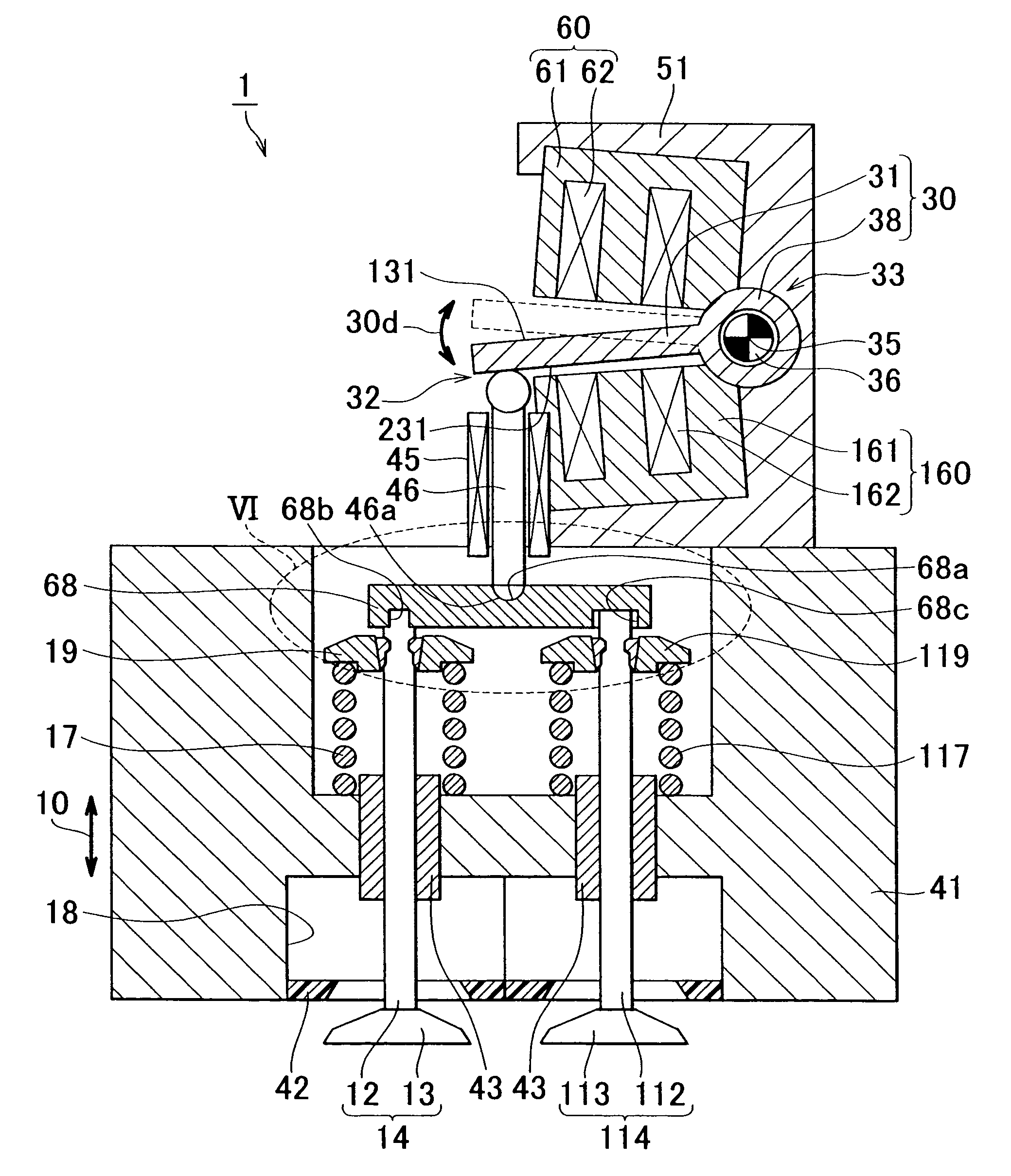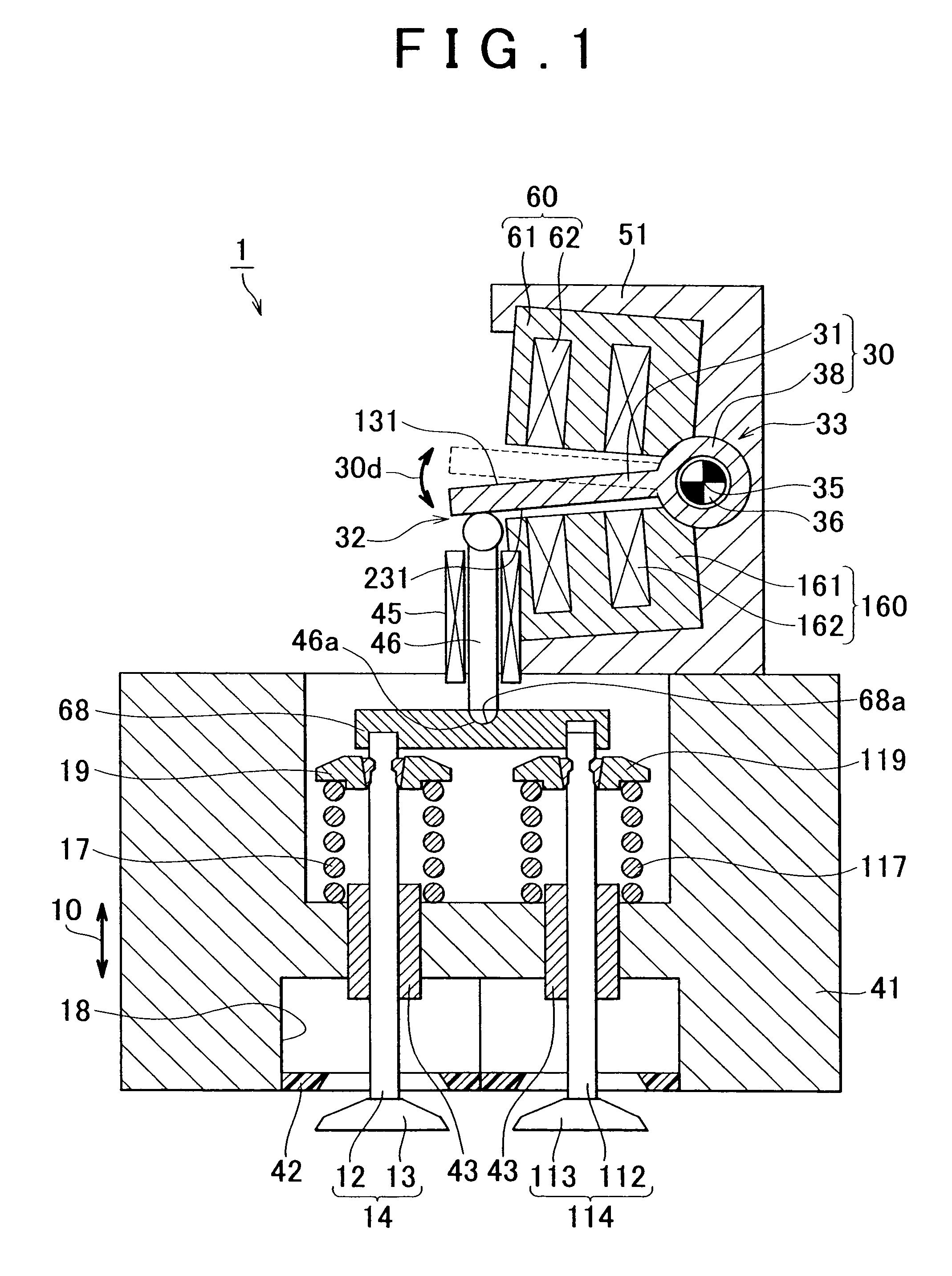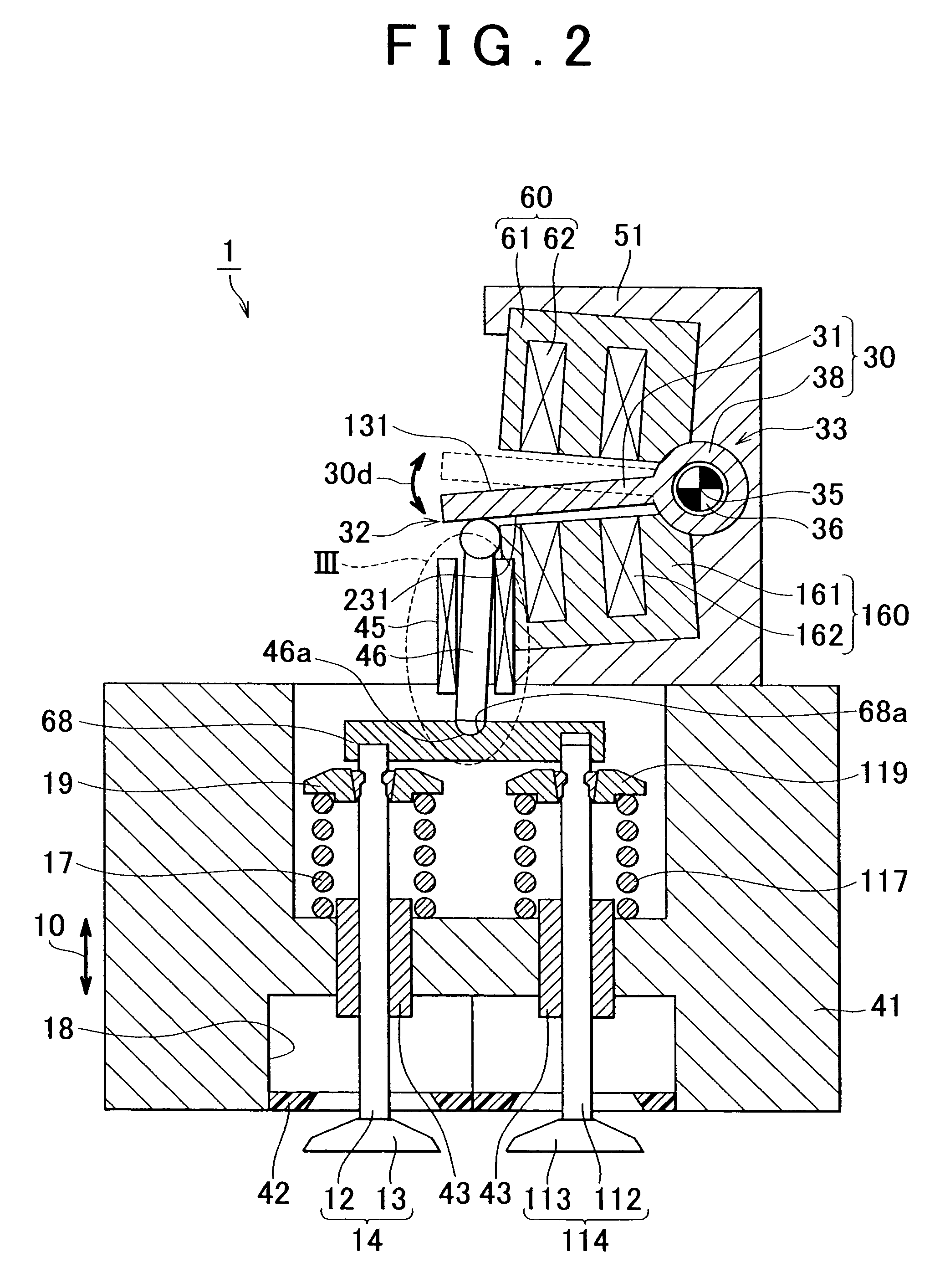Electromagnetically driven valve
a technology of electromagnetic drive and valve body, which is applied in the direction of valve operating means/release devices, non-mechanical valves, machines/engines, etc., can solve the problems of increasing both the cost of producing a drive circuit and the number of components, and achieve the effect of reducing the number of components
- Summary
- Abstract
- Description
- Claims
- Application Information
AI Technical Summary
Benefits of technology
Problems solved by technology
Method used
Image
Examples
first embodiment
[0044]FIG. 1 illustrates the cross-sectional view of an electromagnetically driven valve according to a first embodiment of the invention. As shown in FIG. 1, an electromagnetically driven valve 1 includes a main body 51; an upper electromagnet 60 and a lower electromagnet 160 that are both fitted to the main body 51; a disc 30 that is arranged between the upper electromagnet 60 and the lower electromagnet 160; and a stem 46 that is driven by the disc 30.
[0045]The U-shaped main body 51 is a base member. Various components are fitted to the main body 51. The upper electromagnet 60 has a core 61 made of magnetic material, and a coil 62 wound around the core 61. Similarly, the lower electromagnet 160 has a core 161 made of magnetic material, and a coil 162 wound around the core 161. Application of an electric current to the coils 62, 162 generates magnetic force that drives the disc 30. The disc 30 is arranged between the upper electromagnet 60 and the lower electromagnet 160. The disc...
second embodiment
[0061]FIG. 2 illustrates the cross-sectional view of an electromagnetically driven valve according to a second embodiment of the invention. FIG. 3 illustrates the enlarged cross-sectional view of a portion circled by the dotted line III in FIG. 2. As shown in FIGS. 2 and 3, the electromagnetically driven valve 1 according to the second embodiment differs from the electromagnetically driven valve 1 according to the first embodiment in that the push plate 68 and the stem 46 contact each other at a spherical surface. In FIG. 3, a concave portion 68a is formed in the push plate 68, and a convex portion 46a is formed in the stem 46. However, the configuration is not limited to this. For example, a convex portion may be formed in the push plate 68, and the concave portion may be formed in the stem 46.
[0062]A clearance is left between the stem 46 and the stem guide 45. In this case, the stem 46 may tilt with respect to the stem guide 45. However, because the stem 46 and the push plate 68 c...
third embodiment
[0065]FIG. 5 illustrates the cross-sectional view of an electromagnetically driven valve according to a third embodiment of the invention. FIG. 6 illustrates the enlarged cross-sectional view of a portion circled by the dotted line VI in FIG. 5. As shown in FIGS. 5 and 6, the electromagnetically driven valve 1 according to the third embodiment differs from the electromagnetically driven valve 1 according to the first embodiment in that the valve stem 12 is fitted to the push plate 68 by press-fitting, and the valve stem 112 is fitted to the push plate 68 with a clearance left between the valve stem 112 and the push plate 68. Two concave portions 68b, 68c are formed in the push plate 68, the valve stem 12 is fitted in the concave portion 68b by press-fitting, and the valve stem 112 is fitted in the concave portion 68c with the clearance left between the valve stem 112 and the push plate 68. The method of fitting the valve stem 12 to the push plate 68 need not be press-fitting. The va...
PUM
 Login to View More
Login to View More Abstract
Description
Claims
Application Information
 Login to View More
Login to View More - R&D
- Intellectual Property
- Life Sciences
- Materials
- Tech Scout
- Unparalleled Data Quality
- Higher Quality Content
- 60% Fewer Hallucinations
Browse by: Latest US Patents, China's latest patents, Technical Efficacy Thesaurus, Application Domain, Technology Topic, Popular Technical Reports.
© 2025 PatSnap. All rights reserved.Legal|Privacy policy|Modern Slavery Act Transparency Statement|Sitemap|About US| Contact US: help@patsnap.com



